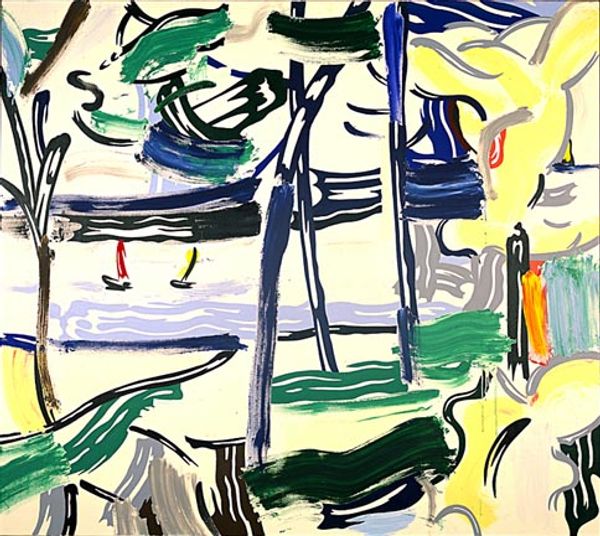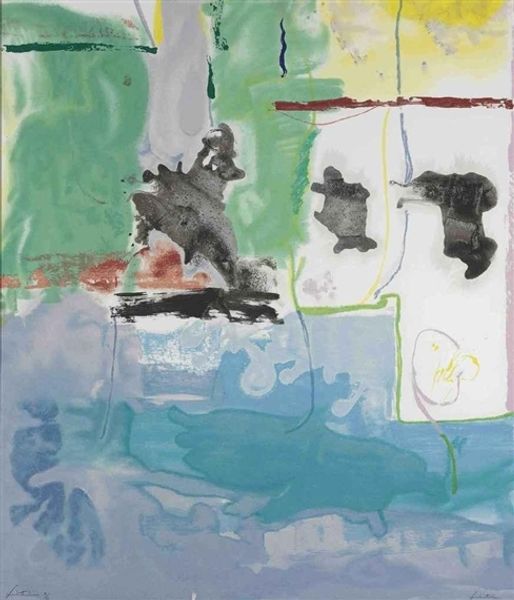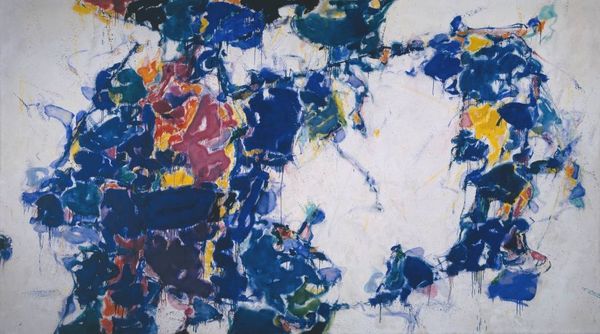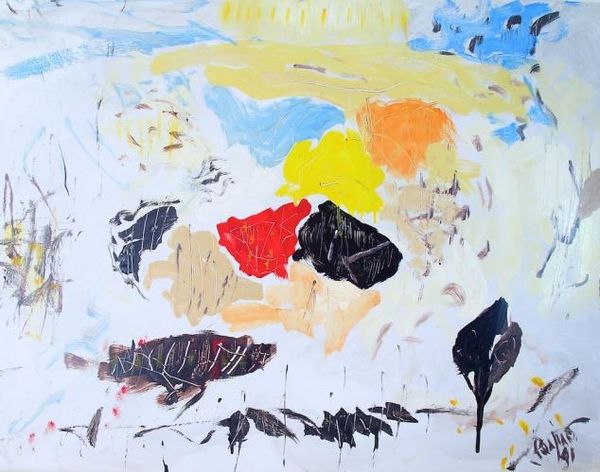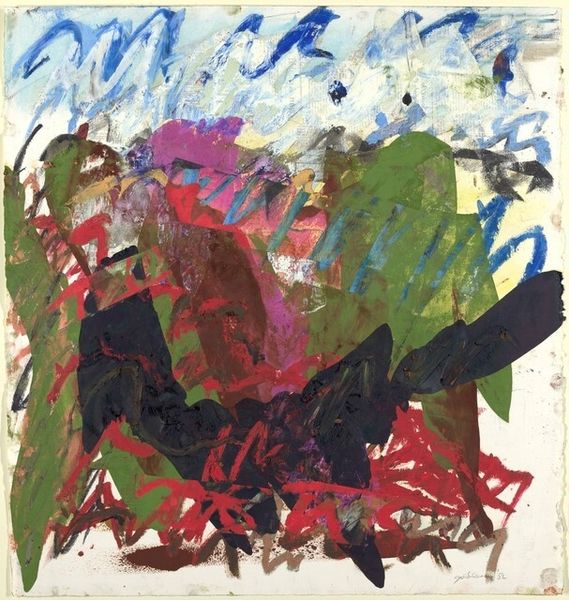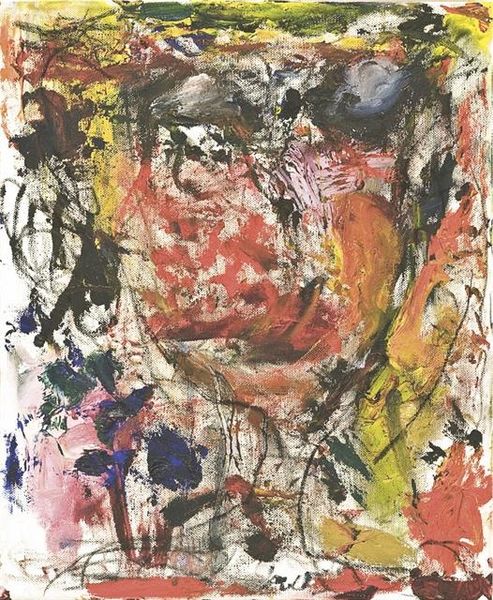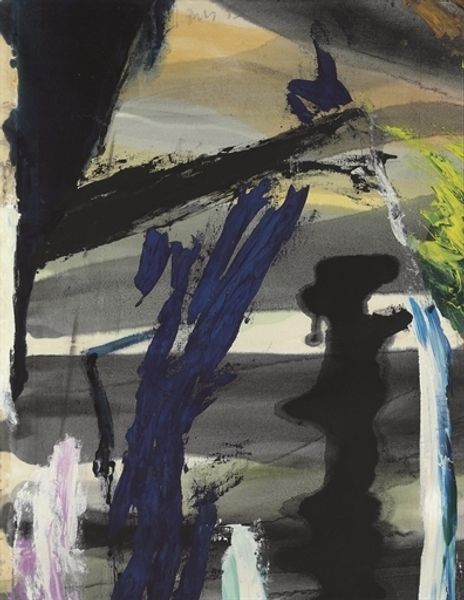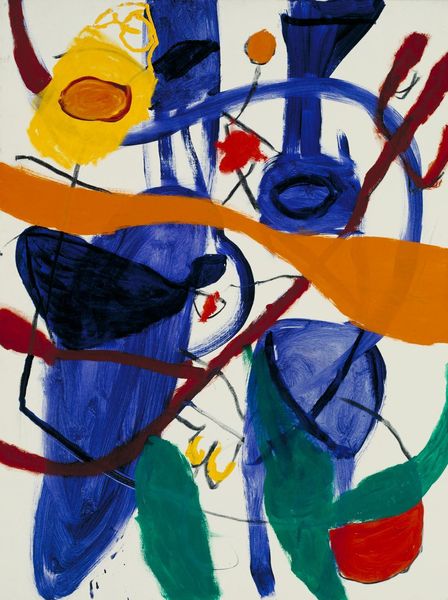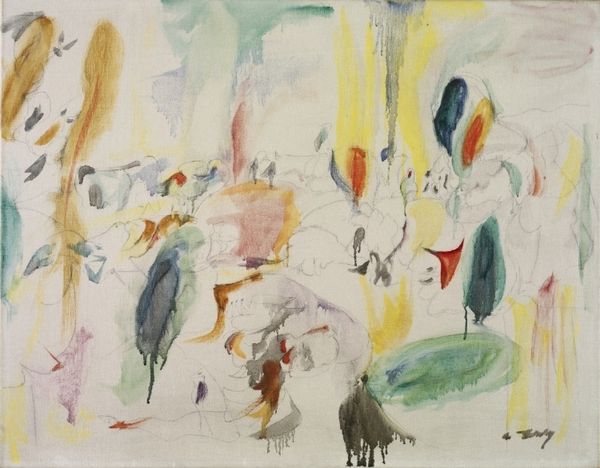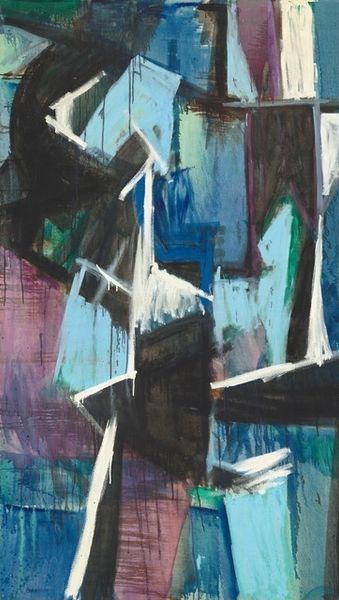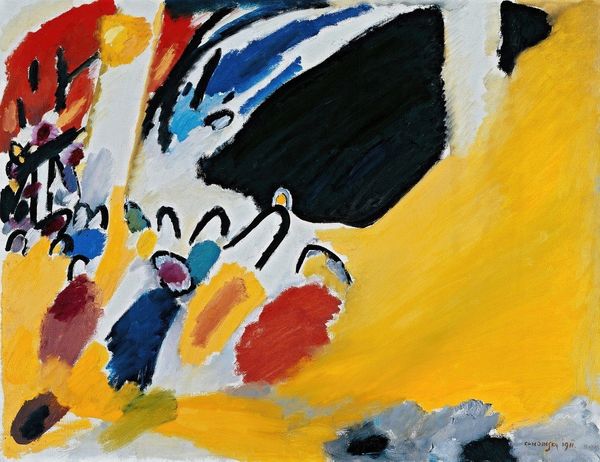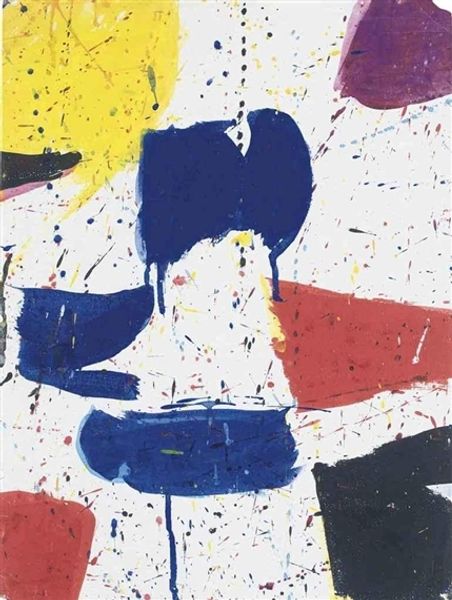
stain, painting, acrylic-paint
#
abstract-expressionism
#
abstract expressionism
#
stain
#
painting
#
colour-field-painting
#
acrylic-paint
#
acrylic on canvas
#
abstraction
#
line
Dimensions: 238 x 236 cm
Copyright: Helen Frankenthaler,Fair Use
Editor: This is Helen Frankenthaler’s "Acres," painted in 1959 using acrylic on canvas. The interplay of blues, yellows, and pinks creates a kind of landscape, even though it's fully abstract. It’s got a playful energy that I really enjoy. What do you see in this piece? Curator: I see a powerful engagement with the legacy of Abstract Expressionism, but also a move toward something new, something uniquely Frankenthaler's. "Acres," like much of her work, confronts the historical constraints placed upon women artists, especially in the mid-20th century. What does it mean to create a landscape, a traditionally masculine subject, with such a distinctly feminine touch? Editor: Feminine touch? What do you mean? Curator: Consider her technique. The stain painting method, where she poured thinned paint directly onto unprimed canvas, allowed the colors to soak into the fabric. It merges color and canvas, challenging traditional notions of artistic mastery. This act in itself can be interpreted as a subtle yet profound rebellion against the patriarchal structures of the art world at the time, don’t you think? Editor: That’s a really interesting point. I hadn't thought about the technique itself as having political meaning. I just saw it as, well, abstract. Curator: Exactly. By deconstructing traditional methods, she was constructing new ways of seeing and being within a male-dominated field. Do the gestural elements feel "aggressive," in the way we often ascribe to male Abstract Expressionists like Pollock? Editor: No, not at all. It feels much more... open and inviting, perhaps? Curator: Precisely. And how might this "openness" challenge traditional, often gendered, interpretations of artistic expression? Editor: This makes me want to rethink abstract expressionism through the lens of gender. It's not just about the colours and forms. Curator: Exactly! Thinking critically allows us to read these paintings through a different set of eyes.
Comments
No comments
Be the first to comment and join the conversation on the ultimate creative platform.
